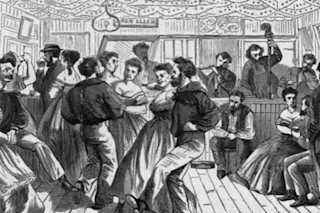For Jade Luiz, a graduate student in archaeology at Boston University, historical archaeology is all about detective work. Through piecing together historical documents and archaeological finds from the outdoor toilet, or privy, of a former brothel near Boston’s North End, she’s been reconstructing the lives of women who participated in sex work in the mid-1800s.
Louisa Cowen, for example, who in 1856 took over as the madam of 27–29 Endicott Street—the brothel behind which stood the privy—typically presented herself as a respectable widow, according to historical mentions of the brothel and census records. Given her status, she likely wore black clothing and adorned herself in somber black jewelry. Her tombstone names her as the wife of Henry Cowen, a Boston house painter who predeceased her. Whether or not the two had been officially married remains unknown. What Luiz does know is that Louisa Cowen became very successful.
The artifacts from ...














